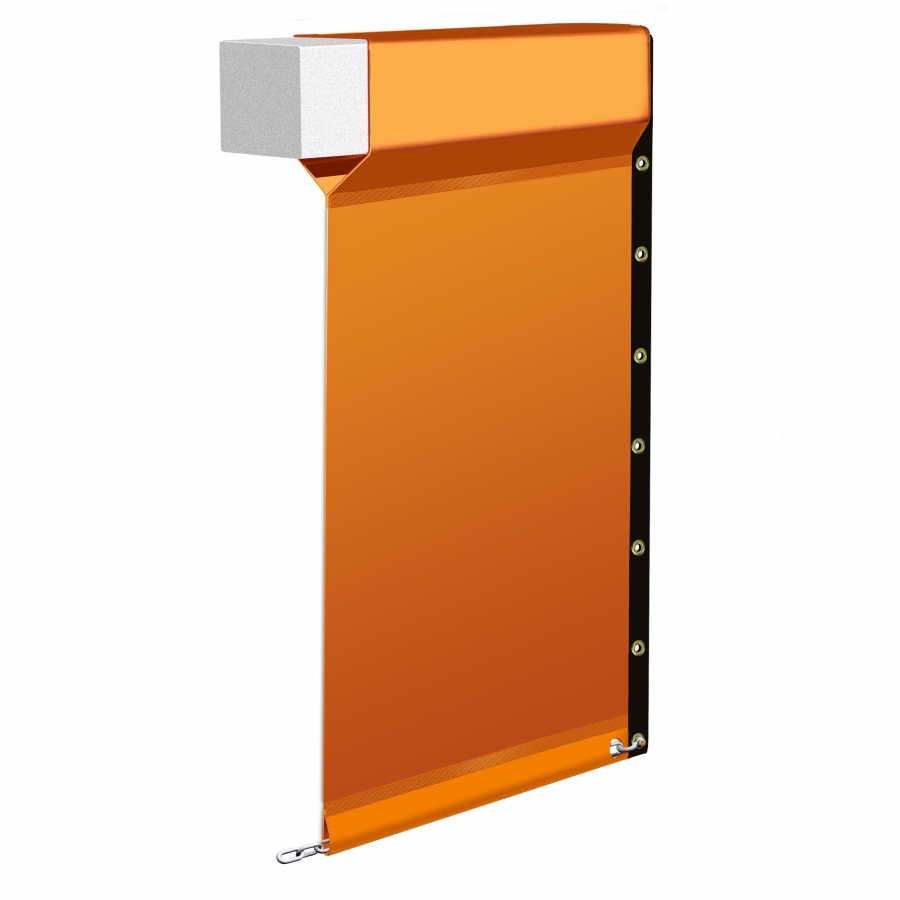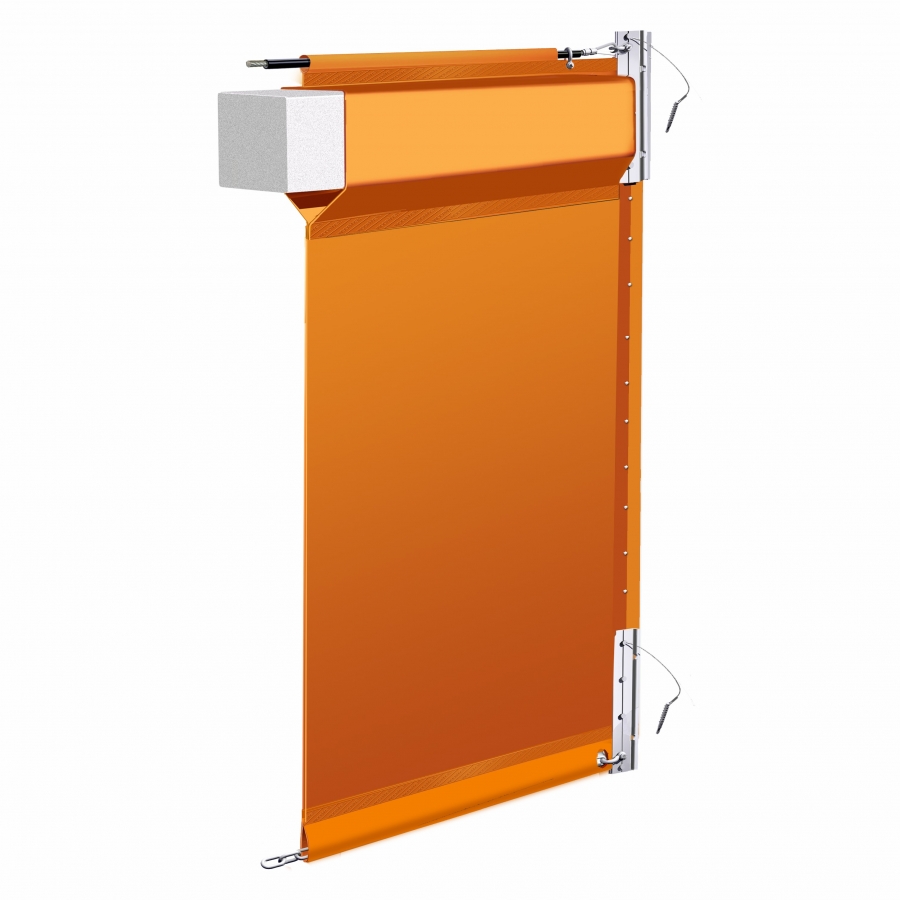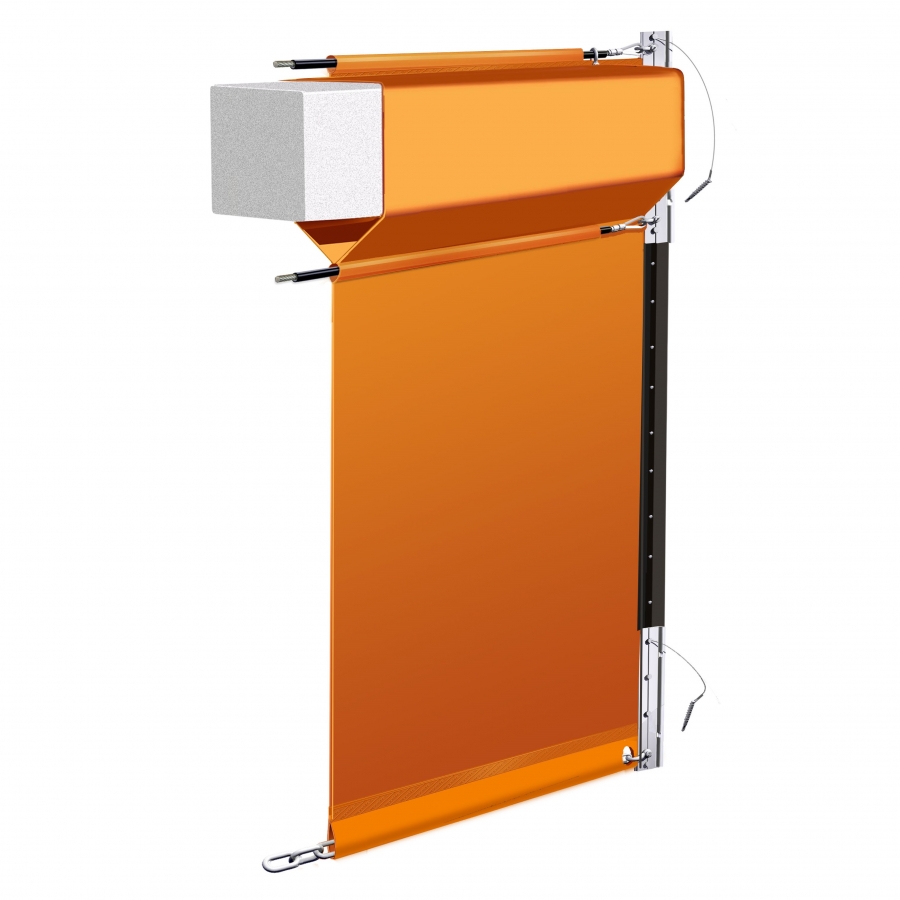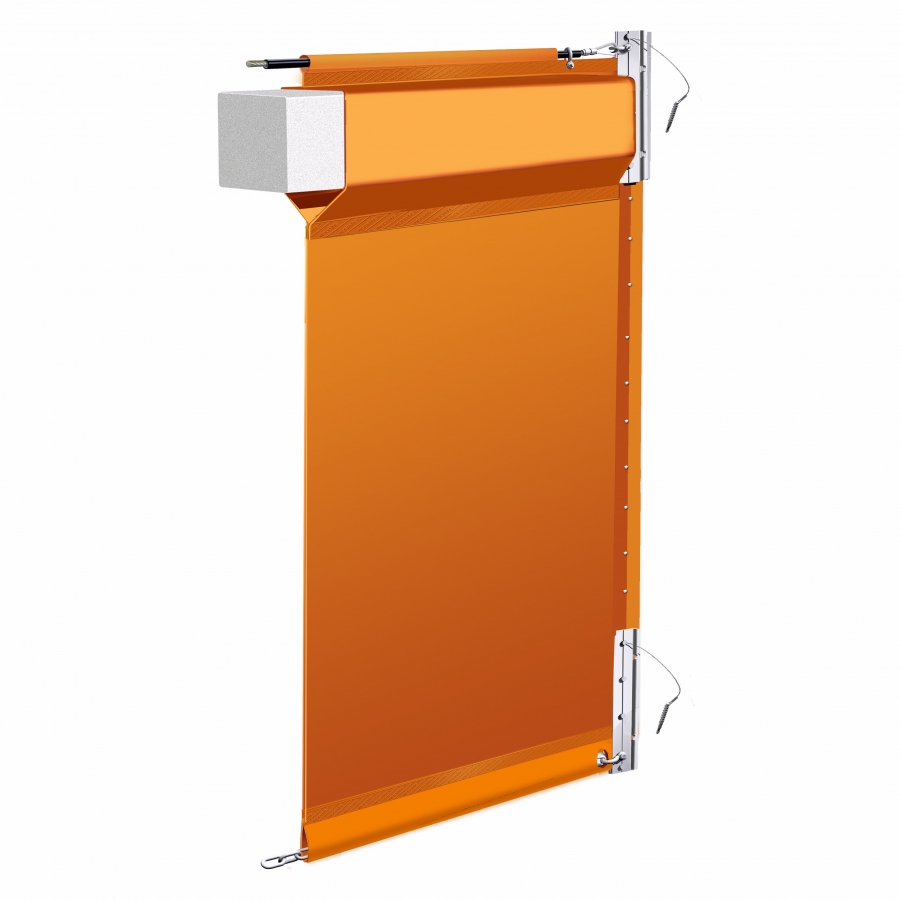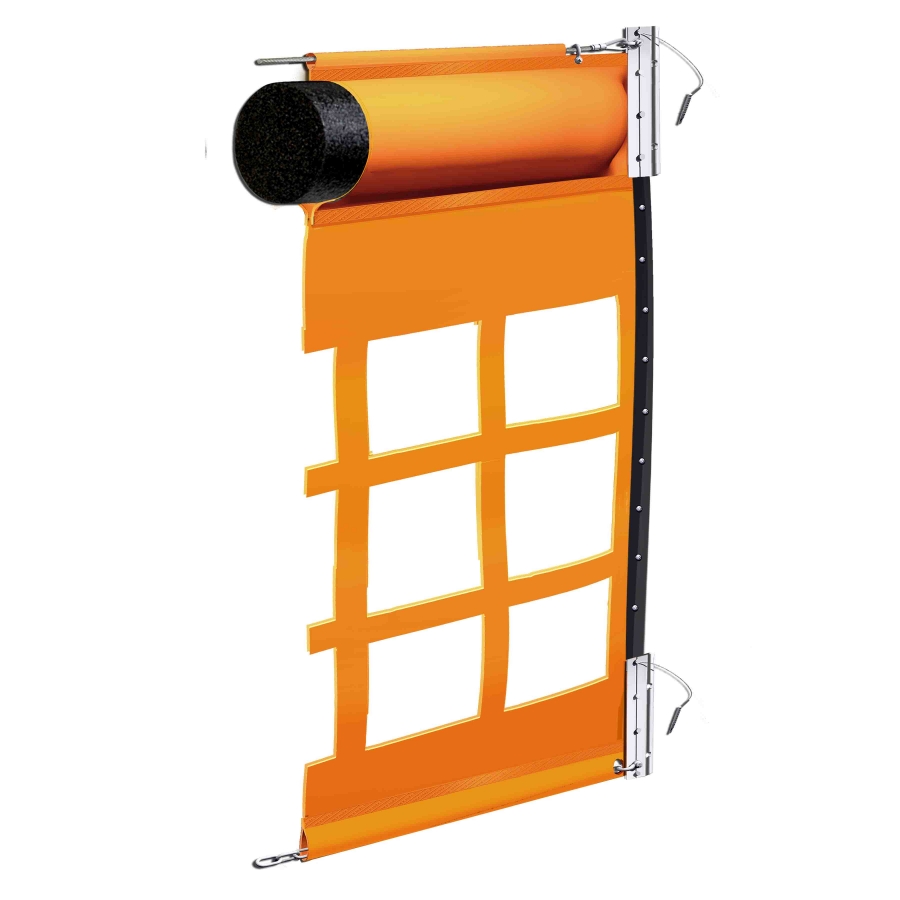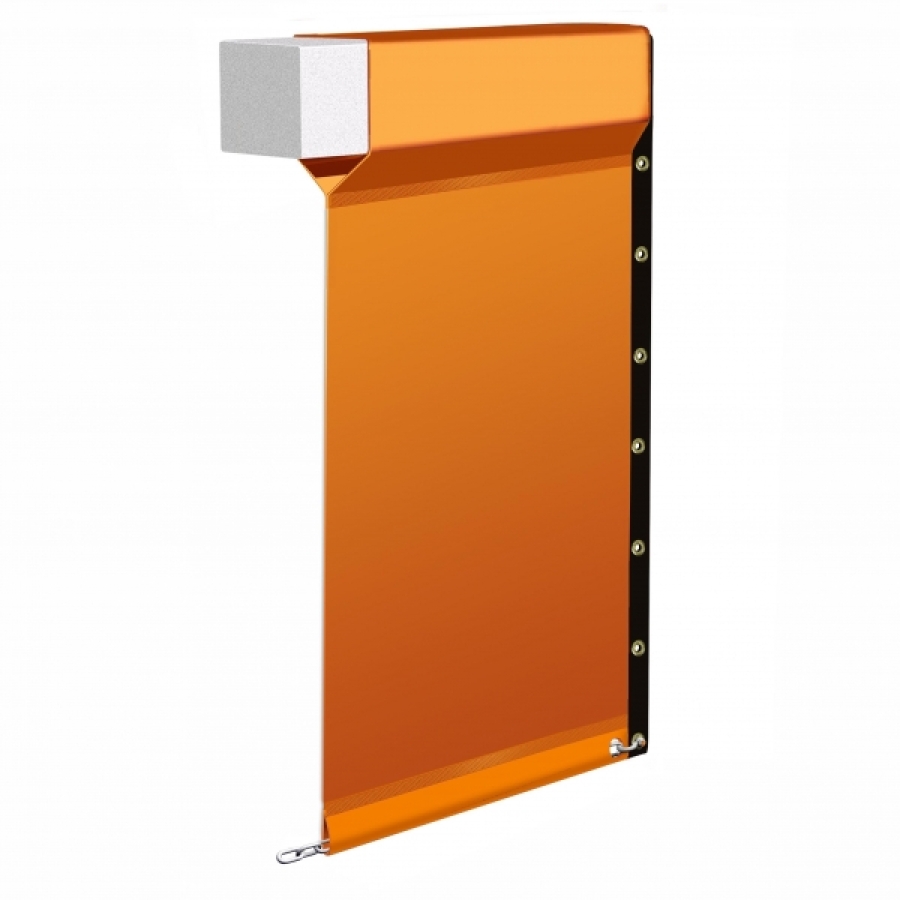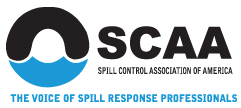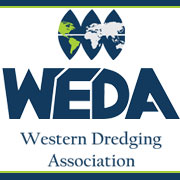Turbidity Curtains
Control sediment, protect water quality, and stay compliant with DOT and Clean Water Act requirements with Texas Boom Company’s turbidity curtains.
Turbidity curtains are floating barriers that confine suspended silt and sediment during marine construction, dredging, and shoreline work. They help maintain water clarity for equipment operation and environmental protection, and support project compliance when designed and deployed correctly.
Texas Boom Company manufactures Type I, Type II, and Type III turbidity curtains in permeable and impermeable options, custom-built to your site conditions. Get expert guidance, stock availability, and rapid turnaround today for your application.
Which Curtain Do I Need?
- Calm or protected waters such as lakes, ponds, and sheltered marinas: Type I
- Moderate current, wind, or boat traffic: Type II
- Strong current, tides, or wave exposure: Type III
- Need to relieve pressure across the skirt in faster water: Permeable skirt
- Need to fully block flow in calm water: Impermeable skirt
Type I Turbidity Curtains
Type 1 turbidity curtains are suitable for use in protected waters where the effects of the wind, waves, and currents are minimal. Texas Boom manufactures Type 1 DOT compliant turbidity curtains.
Type II Turbidity Curtains
Type 2 turbidity curtains are best used to contain silt and turbidity in moving water applications. These Type II turbidity curtains are best used in dredging and marine construction areas that experience mild current, wind, and wave activity. Texas Boom manufactures Type 2 DOT compliant turbidity curtains.
Type III Turbidity Curtains
Type 3 turbidity curtains are best used to contain silt and sediment in water applications with swifter moving water and greater wind exposure. These Type 3 turbidity curtains are best used in dredging and marine construction areas that experience strong currents and tides, high winds, and greater wave activity. Texas Boom manufactures Type 3 DOT compliant turbidity curtains.
How Turbidity Curtains Work
Turbidity Curtains are constructed using floatation at the top to suspend the turbidity curtain in the water. Skirts are attached below the floatation and serve as a barrier to control the silt and sediment. Tension cables are used on heavier-duty turbidity curtains to provide strength. Ballast chains provide strength as well as weight to keep the skirts oriented as close to vertical as conditions allow. The are several different configurations available based on how curtains will be connected end-to-end to provide longer spans, ranging from grommets only to universal aluminum connectors. Turbidity Curtains can be deployed in parallel to increase the effectiveness of controlling the silt or runoff.
How to Install A Turbidity Curtain
- Skirt depth: Set the bottom of the skirt approximately 1 ft above the bottom to prevent build-up on the turbidity curtain, prevent the generation of additional silt, reduce wear, and allow fish passage.
- Tidal water: When tides impact the depth of the water, the height of the curtain should be set based on the average depth at low tide. Turbidity curtains can also be fabricated with tapered bottoms to accommodate changing depths.
- Anchoring: Tie to shoreline pilings/stakes where available; otherwise, use anchor systems planned around wind, waves, currents, tides, and boat lanes.
- Furling/reefing lines (optional): Furling lines are ropes running vertically spanning the height of the turbidity curtain on both sides at set intervals. They can be used to adjust the depth that the skirt extends below the surface or to slope the bottom of the turbidity curtain to mirror the contour of the bottom. Be
TBC advisors are available to consult with you to determine your exact needs. For more information, read our Turbidity Curtain Installation Instructions.
Turbidity Curtain Applications
- Dredging and sediment control
- Bridge, dam, and bulkhead construction and repair
- Marinas, harbors, ports, and terminals
- Pile driving and pipeline crossings
- Erosion and runoff control
- Coastal and shoreline restoration
- Intake and discharge projects
- Wastewater/aeration/mixing ponds (use baffle curtains to manage flow)
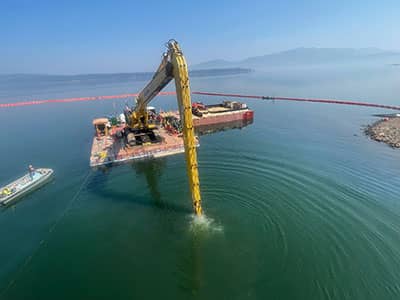
Permeable vs Impermeable Turbidity Curtain Skirts
Permeable skirts: Permeable skirts use a geotextile fabric that allows water to pass through while filtering any suspended particles like silt or other run off. These are typically deployed when there is a current or notable water flow in the area to reduce the pressure on the curtain.
Impermeable skirts: Turbidity curtains with impermeable skirts are fabricated using PVC fabric that completely blocks the flow of water as it meets the skirt.These are more commonly deployed in applications with slower-moving or still waters and calmer weather conditions.
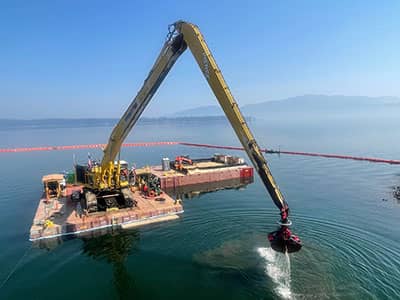
Why Choose Texas Boom Company
- Proven construction: RF-welded seams, marine‑grade hardware, and durable PVC or geotextile skirts designed for field abuse.
- Built to your site: Multiple fabric weights, skirt depths, permeable or impermeable options, tapered skirts, and custom lengths.
- DOT-aware: Manufactured to align with common state DOT Type I/II/III classifications; project-specific requirements available.
- Fast and reliable: Stock on hand for quick response, plus custom fabrication at speed.
- Expert support: Advisors help you size and configure the curtain, anchoring, and connections for your conditions.

